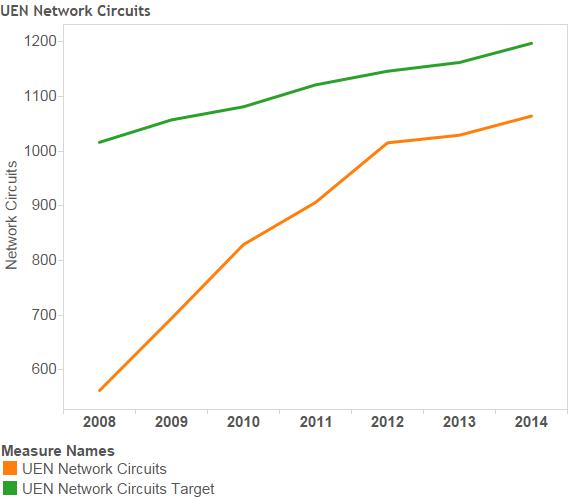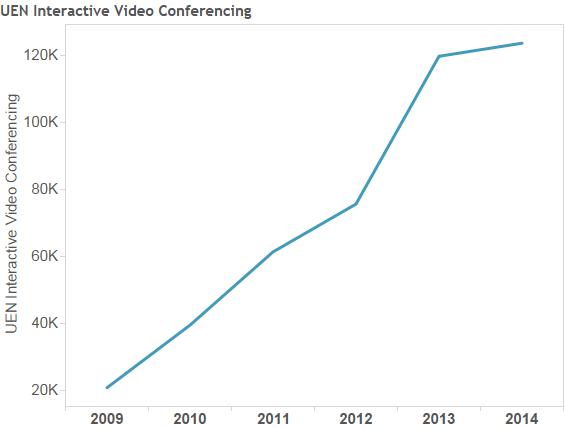The Utah Education Network (UEN) provides broadband Internet connections, application services, and support services to public schools, colleges, universities, libraries, head starts, and charter schools. Among the cost components is delivering video conferencing and other technology tools for distance-based learning.
During the 2015 General Session, the Legislature appropriated for Fiscal Year 2016, $54,128,700 from all sources for Utah Education and Telehealth Network. This is a 14.5 percent increase from Fiscal Year 2015 revised estimated amounts from all sources. The total includes $32,316,400 from the General/Education Funds, an increase of 43.5 percent from revised Fiscal Year 2015 estimates.
In addition to statewide compensation and internal service fund cost increases, the following appropriation adjustments were made during the 2015 General Session:
UEN networks for education, meaning they connect Utah higher education institutions, K-12 traditional and charter schools, and public libraries to the Internet. This measure shows the number of broadband connectivity through UEN. UEN matches the State's costs in connecting Utah schools with E-Rate funding. From FY 2008 to FY 2014, UEN has secured $80,689,945 in E-rate reimbursements for K-12 school, library, and head start program connectivity.

UEN delivers fully interactive classroom instruction to college and public school students at around 940 classroom locations and around 1,100 registered video conferencing devices throughout the State. UEN's interactive video conferencing (IVC) supports thousands of classes, full degree programs, concurrent enrollment, administrative events, and other IVC activities each year. This measure shows the number of institutions/agencies participating in UEN's IVC. This measure does not have specific targets each fiscal year. Since FY 2009 demand for IVC continues to increase.

UEN licenses and supports a Course Learning Management System (Canvas) for all higher education colleges and universities for online and in-person classes. This measure shows the average total number of concurrent users by academic semester using the UEN-supported Learning Management Systems against total faculty/instructor and student headcount for the fall semester of the academic year.
In addition to the key performance measures listed above, UEN also measures its performance in usage of the Pioneer Library and sessions of interactive video conferencing. It also closely monitors network utilization and reliability, among other things, and reports those results monthly to the UEN Governing Board.
The Utah Education Network (UEN), a public-private partnership of Utah's public K-12 and higher education institutions, delivers education statewide through video conferencing and other technology-based tools. UEN provides broadband Internet connections, application services, and support services to public schools, colleges, universities, libraries, head starts, and charter schools in the State through shared telecommunications infrastructure and consortium licensing. UEN also provides interactive video conferencing (IVC) and desktop computer video conferencing in delivering courses and instructor led curriculum at around 940 locations across the State and from around the world. UEN operates a public television station, KUEN TV 9, which includes digital channels UEN-TV and MHz Worldview. UEN also works closely with PBS station partner KUED-TV. UEN leverages state appropriations with other grants and E-rate discounts to perform its mission.
UEN's financial resources come from General and Education Fund appropriations, federal grants, federal E-rate discounts, and reimbursement by education entities.
In past years, UEN's budget has been appropriated in numerous line items. Since FY 2008, it has all been appropriated to one line item, allowing UEN maximum flexibility in managing resources.
COBI contains unaudited data as presented to the Legislature by state agencies at the time of publication. For audited financial data see the State of Utah's Comprehensive Annual Financial Reports.